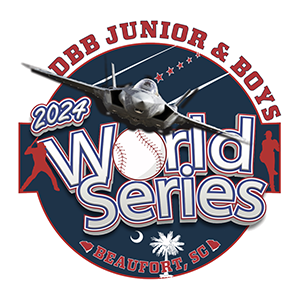Beaufort Slang: How to Speak Like a Local
If you’re just visiting the Lowcountry or new to Beaufort (pronounced “BEW-frt”) – here’s a list of local terms you may want to know about.
Beaufort’s history is as old as America itself and there’s been a lot of time for her to develop her own language. Full of local terms, local foods and even landmarks-known-by-another-name, Beaufort’s quirky character really shine through in a number of ways.
If you’re just visiting, here is a dictionary (of sorts) of local terms that you need to know, or may need to refer to when talking to a local. If you’re new to town, well, you better get to studying so you don’t sound like an outsider in your new hometown.
Here is some Beaufort slang you may encounter on your visit:
No see-ums: Sand gnats, or fleas. Whatever you want to call them. The bugs that you feel biting you, nonstop, but you can’t see them.
Old bridge: The ‘old bridge’ is a term that locals commonly use when referring to the Woods Memorial Bridge in downtown Beaufort, built in 1959. (old)
New bridge: The ‘new bridge’ is a term that locals use when referring to the McTeer Bridge, connecting Port Royal to Lady’s Island, built in the 1980’s. (new)
Gullah: Gullah is a language spoken by the Gullah people, an African-American population living on the Sea Islands and coastal regions here in the Lowcountry. The Gullah language is based on English with strong influences from West and Central African languages.
Bellamy Curve: The sharp, right angled convergence of Carteret and Boundary Streets just past (or just before) USCB. Bottom line, it’s a bad bend and must be approached with care. Be careful not to let the beautiful view lull you into mistaking the sharpness of the bend. Several cars have ended up in the Beaufort River as a result.
Geechie: See Gullah, above.
Beaufort Marsh Trolley: An ugly vessel seen on one of Beaufort’s many waterways. It may be ugly, but it floats.
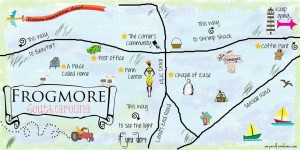
Frogmore: Yes, Frogmore exists. It’s a little village at the intersection of Sea Island Parkway and Martin Luther King, Jr. Blvd on St. Helena Island. You can enjoy some fine art and great eating in Frogmore.
Frogmore International Airport: No, it does not exist. Locals jokingly refer to the Lady’s Island Airport (the Beaufort County Airport) as Frogmore International. Undoubtedly poking fun at the little village of Frogmore.
SUPing: Short for stand up paddleboarding. Contrary to popular belief, locals aren’t capable of walking on water. We use boards.
The Point: A beautiful historic section of downtown Beaufort. Go to the end of Bay Street and cross straight through the light. You’re in The Point neighborhood. Once called Black’s Point and home to the region’s largest shipyard at the time before and during the Revolutionary War, the neighborhood is now one of the most beautiful spots in downtown.
Island Time: What both locals and visitors live on from May through September.
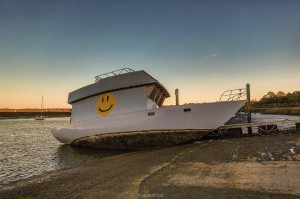
The Happy Boat: Once upon a time, a local took two pieces of two different types of boat and attempted to put them together to build his own. When folks complained of the eye sore, he painted a smiley face on it. Then it was called the Happy Boat. (see Beaufort Marsh Trolley, above)
The Land’s End Light: Nobody knows what it is, but it’s really really scary. There have been many reports of an eerie light floating over Land’s End Road on St. Helena Island. Some claim it is the ghost of a murdered Confederate soldier who was on patrol in 1861. They say a Yankee soldier crept up behind him and cut off his head, and he now goes up and down the road in search of it, eternally, carrying his old iron lantern. Whatever it is, the Land’s End Light really is there.
Beaufort Crud: In Beaufort, we work hard and we play hard. We apparently get sick hard too. The flu, when accompanied by more than your average amount of body aches, is referred to locally as, The Beaufort Crud.
Root Doctor: A root doctor in the Gullah culture is a conjurer who specializes in the use of roots and herbs, as well as the supernatural, to cure human ailments and to also do a variety of ‘things’. Beaufort was home to a few popular hoodoo practitioners back in the day, who were both herbalists and folk-magicians…and one was even the sheriff.
Frogmore Stew: Learn to enjoy it. Frogmore Stew is a dish consisting of local shrimp, corn, sausage, potatoes and onions all cooked together in the same pot. You must eat it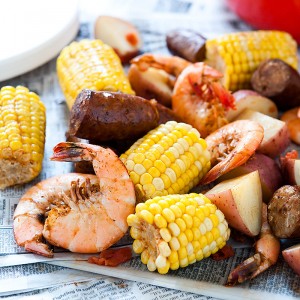 on a table, spread out over old newspapers to get the full proper effect. It’s a staple here in the Lowcountry, and has been bringing friends and families together for generations.
on a table, spread out over old newspapers to get the full proper effect. It’s a staple here in the Lowcountry, and has been bringing friends and families together for generations.
Queen of the Sea Islands: Another name for Beaufort
The Sands: A local favorite spot along the water in Port Royal that’s been drawing folks from all over for years. The Sands is a small stretch of a few acres of beach where you can bring your car along side of you, look for some sharks teeth, enjoy some fishing and time with friends.
Tabby: Tabby is a concrete made from lime, sand and oyster shells. Dating back to the 1500s, the actual origin of tabby is uncertain, but it’s responsible for building Beaufort and is still visible everywhere today.
Day trippers: People who live just outside of the Beaufort area who come to town for the day.
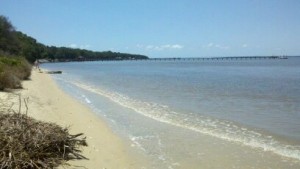
Land’s End: A picturesque spot on St. Helena Island at the very end of Land’s End Road. Land’s End is home to a small village, a small pristine public beach and the Spanish-American War era Fort Fremont. It truly is at the end of the land.
The Waterfront: While ALL of Beaufort could be considered waterfront, when a local talks about ‘the waterfront’, they’re undoubtedly referring to downtown’s Henry C. Chambers Waterfront Park and adjoining areas including the seawall, the playground and downtown marina area.
The Sandbar: In the Beaufort River, the Beaufort Sandbar rises out of the water as the tide goes out and provides a
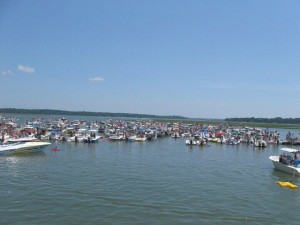
temporary fun spot for everyone to gather. You’ll see folks of all ages in all kinds of watercraft at the Sandbar. You can’t miss it. At low tide, look out into the Beaufort River about halfway between downtown’s Henry C. Chambers Waterfront Park and Beaufort Memorial Hospital.
Pluff mud: Driving by a marsh with the windows down? What’s that smell you say? It’s pluff mud. The decomposition of dead marsh grass creates pluff mud. The soil that marsh grass grows in is muddy and full of peat, which is made of all that decomposing plant matter. The decomposing process creates the distinctive sweet and acrid aroma that some describe as a rotten egg smell… but Lowcountry folks describe it as the smell of home.
The Frog: What locals call The Foolish Frog – one of our fabulous local restaurants on St. Helena Island. (must be the laid back attitude)
The Bluff: Coming into downtown Beaufort from Ribaut Road is as scenic a drive as you’ll ever take in Beaufort. When the Beaufort River appears below and off to your right, you’ve hit ‘The Bluff’. Home to many of Beaufort’s beautiful historic homes turned bed & breakfast, it’s lined with centuries-old live oaks and is one of the best and most breathtaking views you’ll see in the area.
Fripper: Someone from Fripp Island. Either a year round resident or a vacationer. It’s a whole other world out on Fripp Island, so it’s only fitting that residents are given a slang name of their own.
One could literally write a book on Beaufort slang and local sayings. If you want to know more, come visit Beaufort to hear them for yourself. At least now you’ve got a fighting chance at understanding what some folks are saying.
